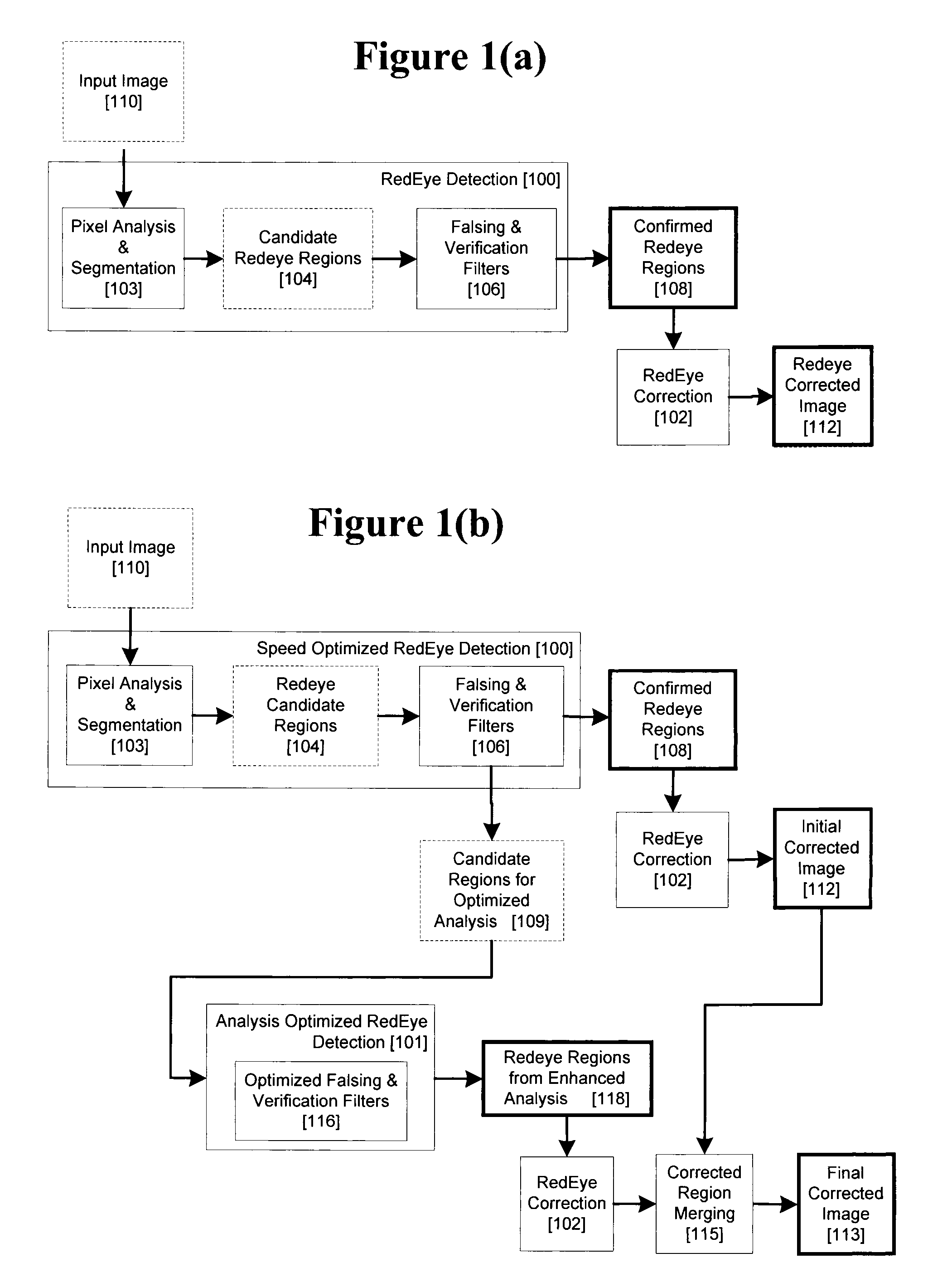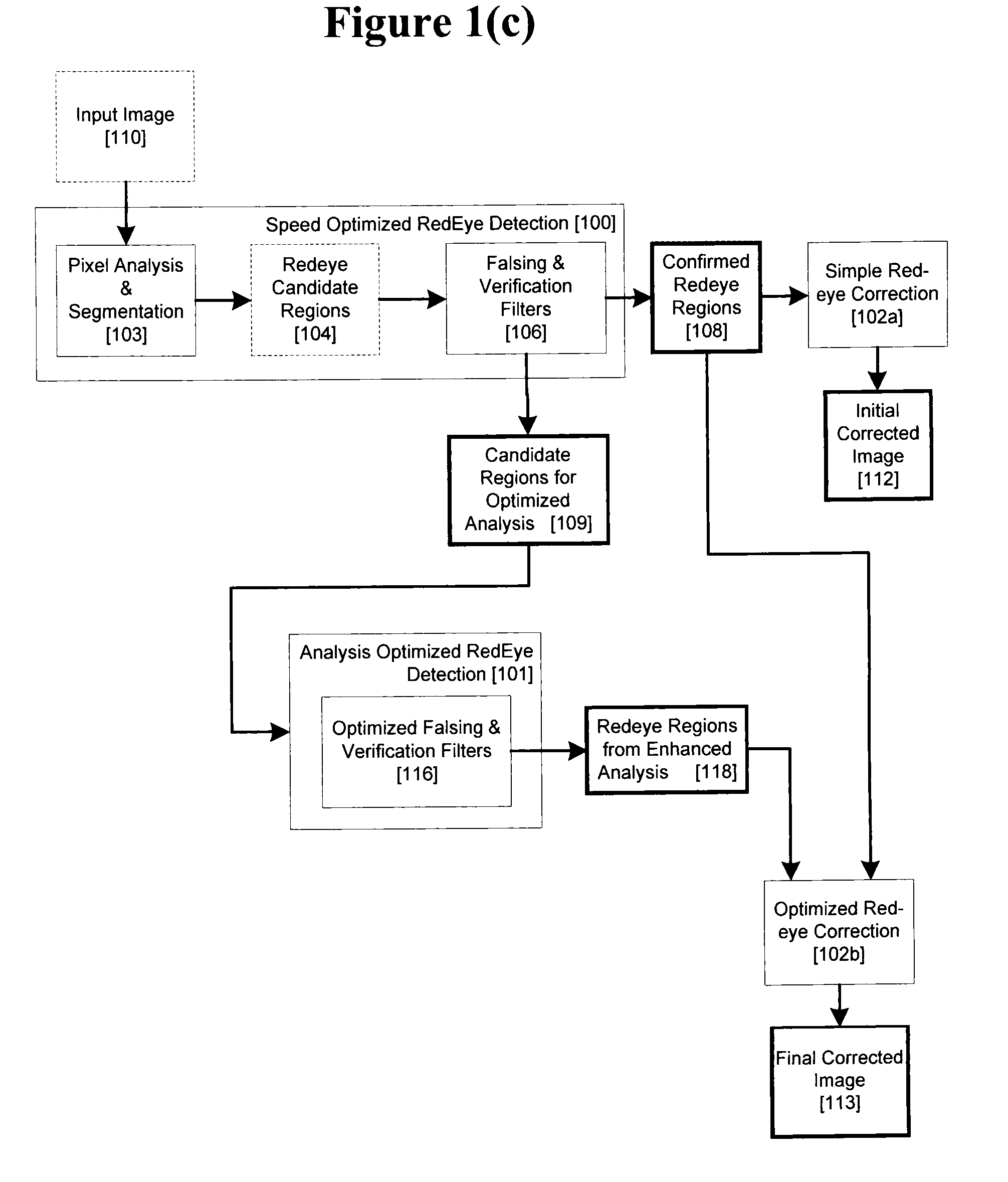Two Stage Detection for Photographic Eye Artifacts
a technology of eye artifacts and detection algorithms, applied in the field of digital image processing, can solve the problems of only being able to detect detection algorithms, high computation and memory resource requirements of face detection-based automatic redeye reduction techniques, and generally not detecting faces that are rotated in-plane or out-of-plane with respect to the image plan
- Summary
- Abstract
- Description
- Claims
- Application Information
AI Technical Summary
Benefits of technology
Problems solved by technology
Method used
Image
Examples
Embodiment Construction
[0042]A two-stage redeye filtering process is provided whereby a speed optimized filter performs the initial segmentation of candidate redeye regions and optionally applies a speed-optimized set of falsing / verification filters to determine a first set of confirmed redeye regions for correction. Some of the candidate regions which are rejected during the first stage are recorded and re-analyzed during a second stage by an alternative set of analysis-optimized filters to determine a second set of confirmed redeye regions.
[0043]Optionally, the first set of confirmed redeye regions may be passed through the second stage analysis-optimized filters.
[0044]In an alternative embodiment, the second stage filter may incorporate an enhanced correction filter which may be optionally applied to the first set of confirmed redeye regions.
[0045]A process is provided including implementing a two-stage redeye filter wherein a first redeye filter process, which is optimized for speed, is combined with ...
PUM
 Login to View More
Login to View More Abstract
Description
Claims
Application Information
 Login to View More
Login to View More - Generate Ideas
- Intellectual Property
- Life Sciences
- Materials
- Tech Scout
- Unparalleled Data Quality
- Higher Quality Content
- 60% Fewer Hallucinations
Browse by: Latest US Patents, China's latest patents, Technical Efficacy Thesaurus, Application Domain, Technology Topic, Popular Technical Reports.
© 2025 PatSnap. All rights reserved.Legal|Privacy policy|Modern Slavery Act Transparency Statement|Sitemap|About US| Contact US: help@patsnap.com



